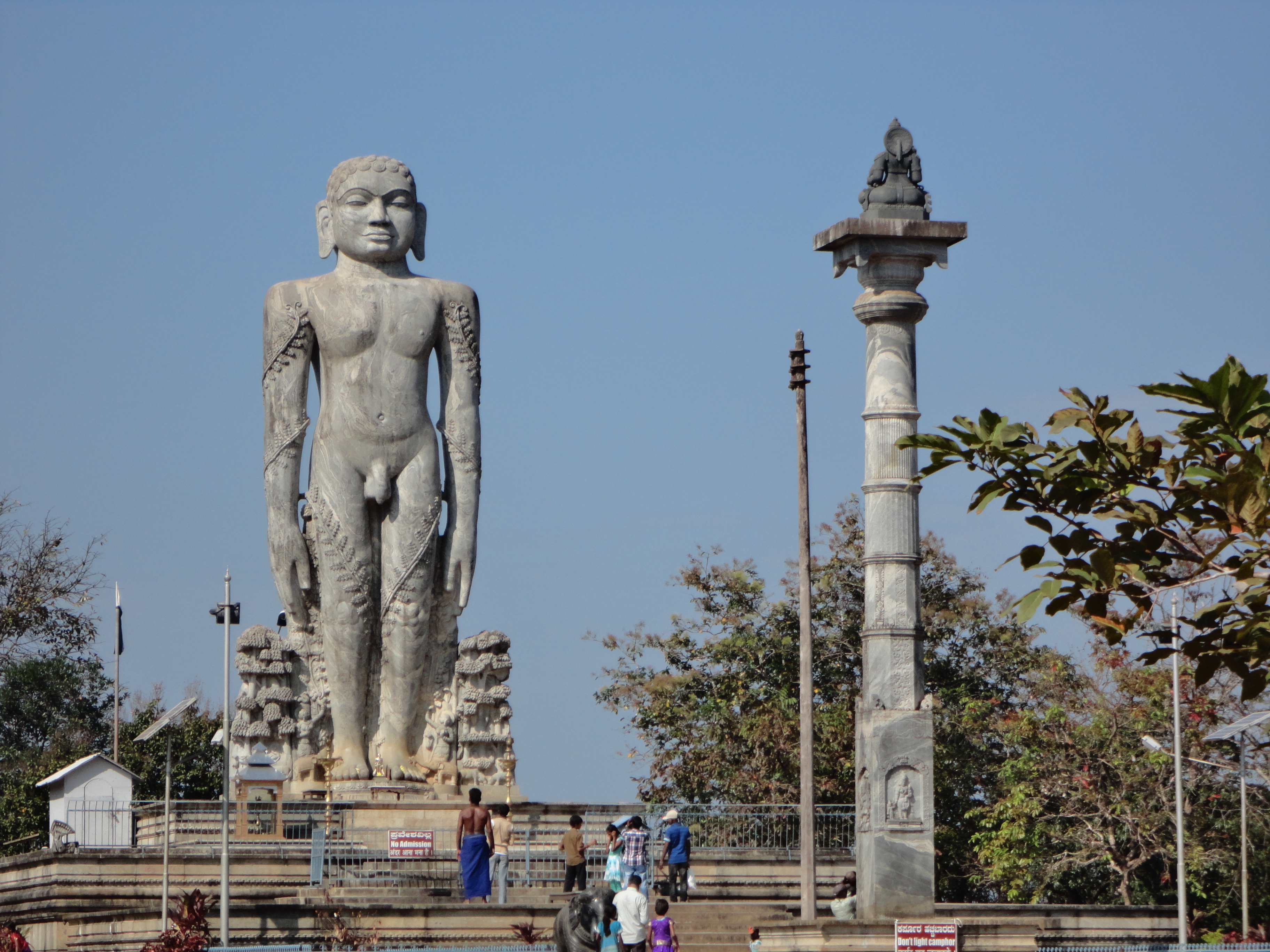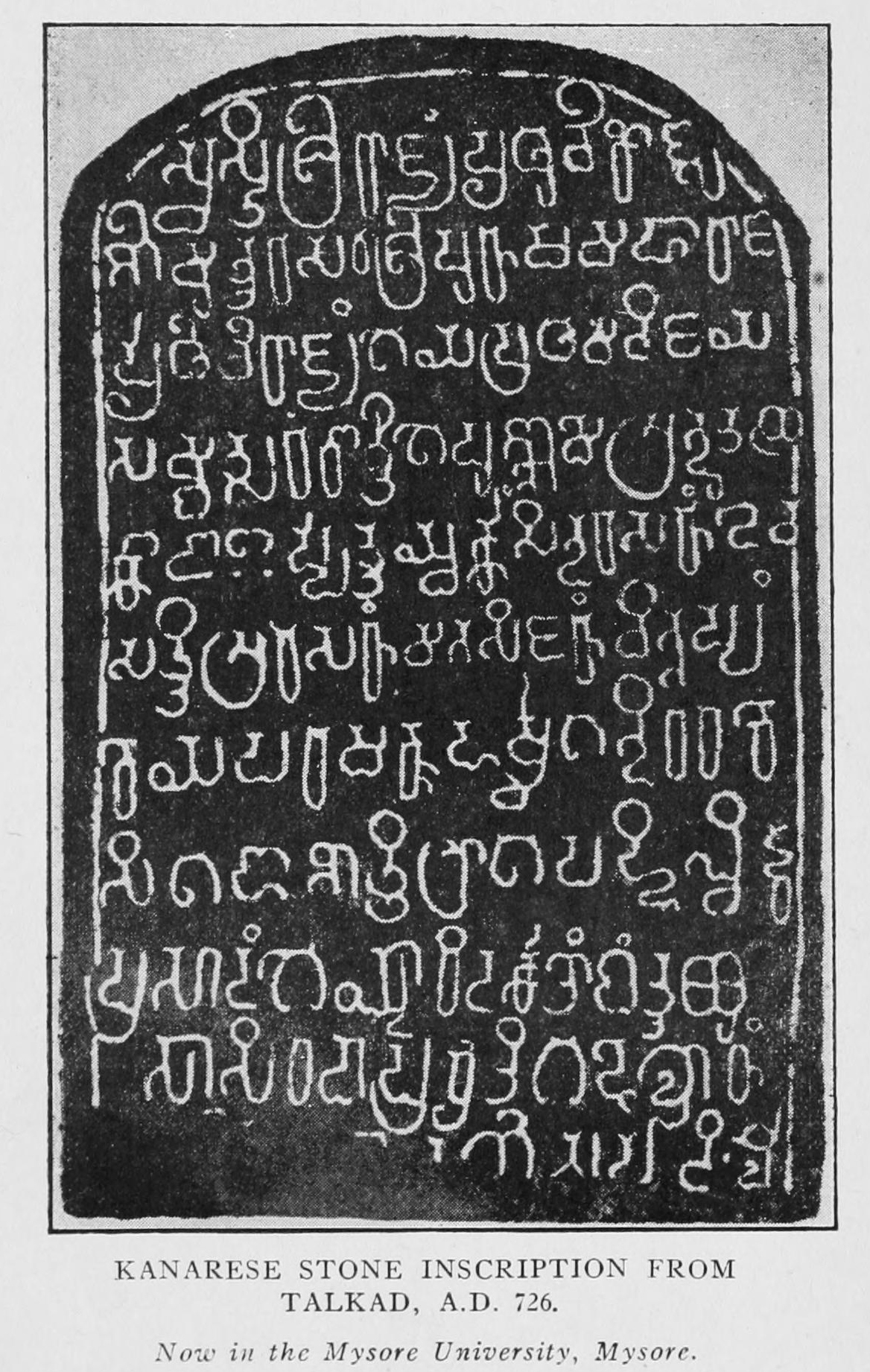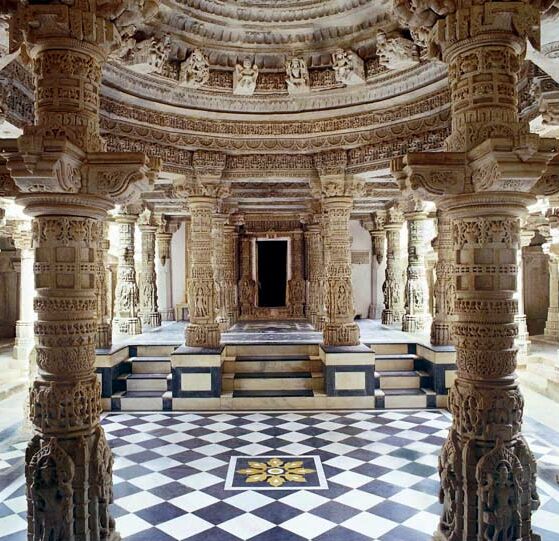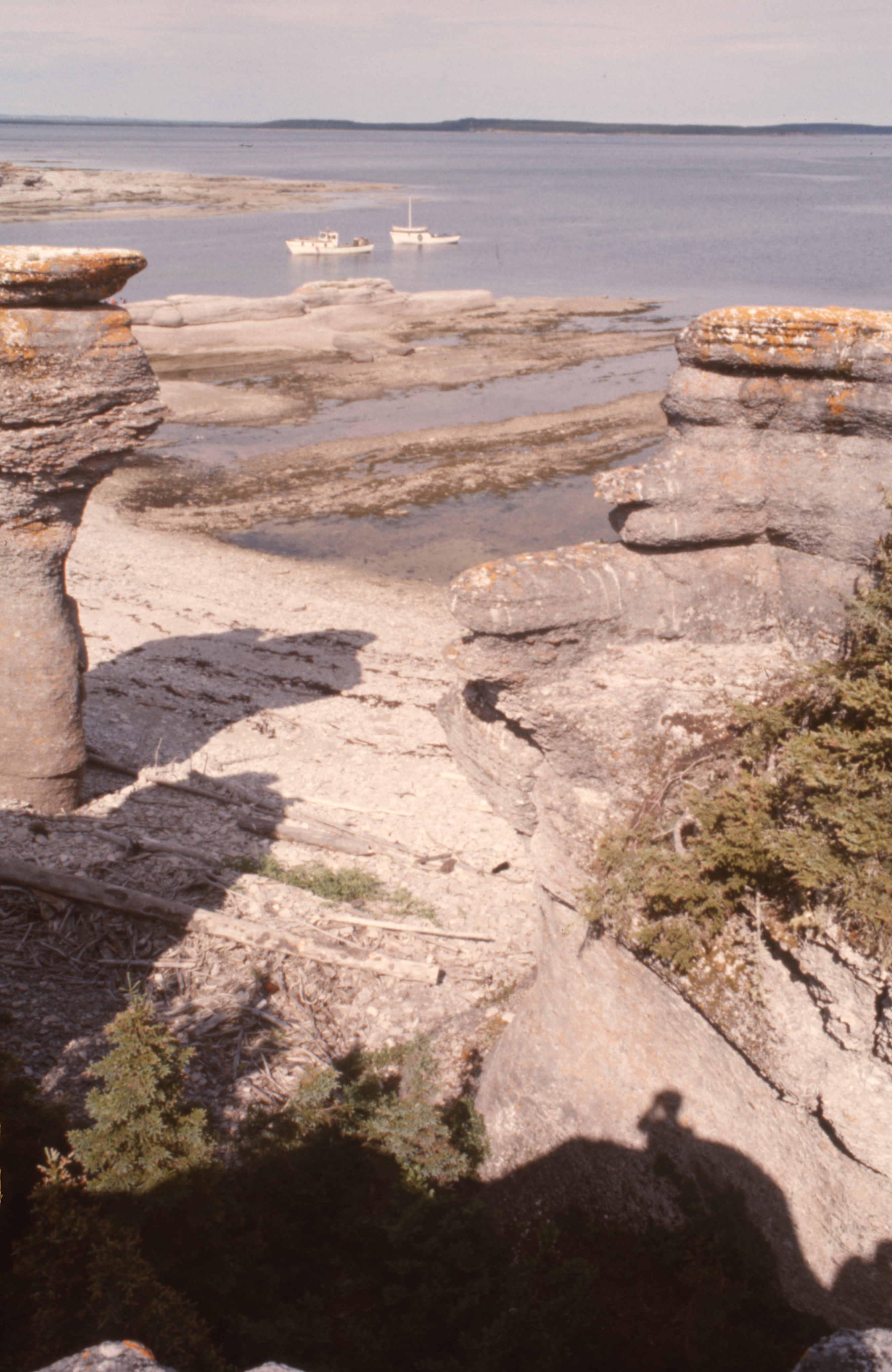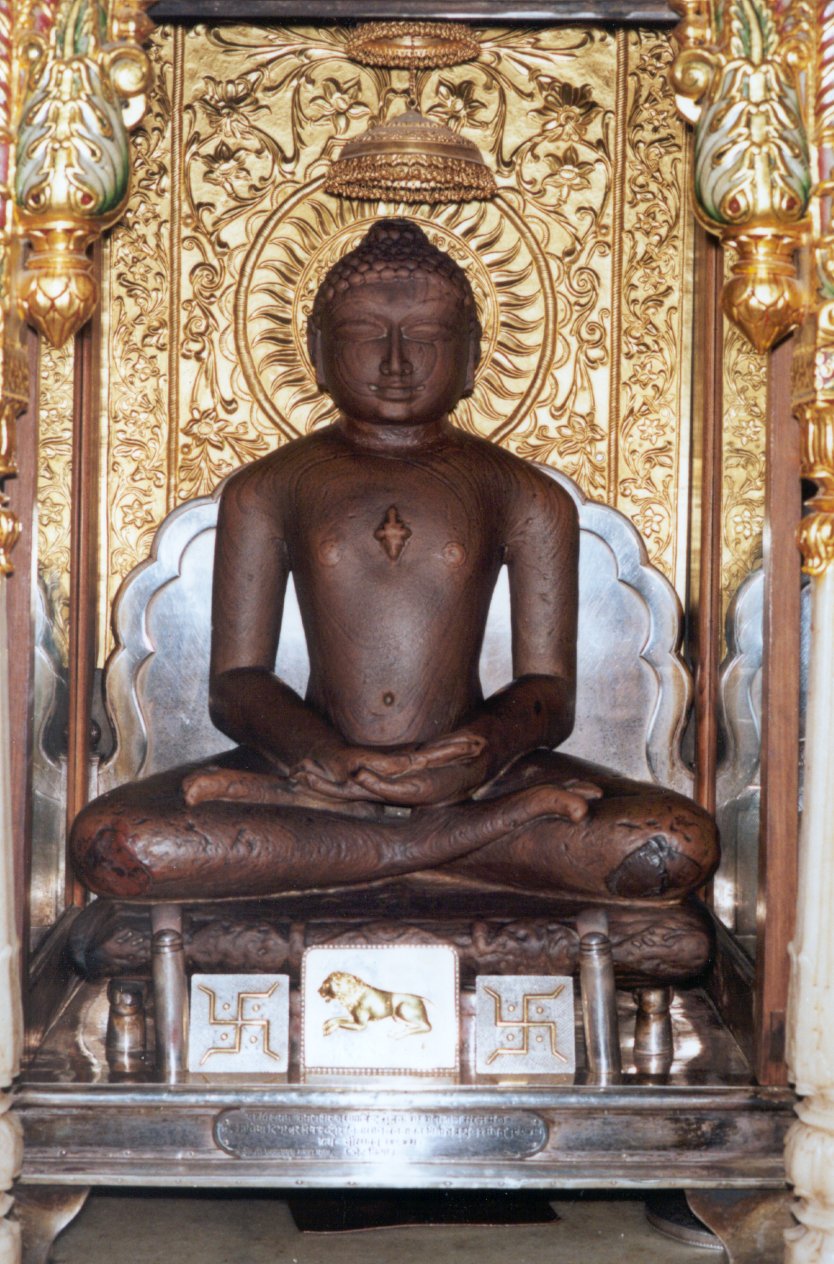|
Gommateshwara
The Gommateshwara statue is a high monolithic statue on Vindhyagiri, also known as ''Indra-giri'' in the town of Shravanbelagola in the Indian state of Karnataka. Carved of a single block of granite, it is one of the tallest monolithic statues in the ancient world. The Gommateshwara statue is dedicated to the Jain figure Bahubali and symbolises the Jain precepts of peace, non-violence, sacrifice of worldly affairs, and simple living. It was built around 983 CE during the Western Ganga dynasty and is one of the largest free-standing statues in the world. It was regarded the tallest Jain statue until 2016. The construction of the statue was commissioned by the Ganga dynasty minister and commander Chavundaraya. Neighbouring areas have Jain temples known as ''basadis'' and several images of the Tirthankaras. Vindyagiri Hill is one of the two hills in Shravanabelagola. The other is Chandragiri, which is also a seat of several ancient Jain centres, much older than Gommatesh ... [...More Info...] [...Related Items...] OR: [Wikipedia] [Google] [Baidu] |
Shravanbelagola
Shravanabelagola (pronunciation: ) is a town located near Channarayapatna of Hassan district in the Indian state of Karnataka and is from Bengaluru. The Gommateshwara statue, Gommateshwara Bahubali statue at Shravanabelagola is one of the most important Tirtha (Jainism), tirthas (pilgrimage destinations) in Jainism, one that reached a peak in architectural and sculptural activity under the patronage of Western Ganga dynasty of Talakad. Chandragupta Maurya is said to have died on the hill of Chandragiri hill, Chandragiri, which is located in Shravanabelagola, in 298 BCE after he became a Jain monasticism, Jain monk and assumed an ascetic life style. Gommateshwara statue, Akkana Basadi, Chandragupta basadi, Chamundaraya Basadi, Parshvanatha basadi, Shravanabelgola, Parshvanath Basadi and inscriptions of Shravanabelagola group of monuments are listed as Adarsh Smarak Monument by Archaeological Survey of India. Location Shravanabelagola is located at to the south-east of Channar ... [...More Info...] [...Related Items...] OR: [Wikipedia] [Google] [Baidu] |
Bahubali
Bahubali (, ) was the son of Rishabhanatha (the first ''tirthankara'' of Jainism) and the brother of the ''Chakravarti (Sanskrit term), chakravartin'' Bharata (Jainism), Bharata. He is a revered figure in Jainism. He is said to have meditated motionless for 12 years in a standing posture (''kayotsarga''), with climbing plants having grown around his legs. After his 12 years of meditation, he is said to have attained omniscience (''Kevala Jnana, kevala jnana''). Bahubali's other names are Kammateshwara and Gommateshwara, the namesake of the Gommateshwara statue dedicated to him. Legends The ''Adipurana'', a 9th-century Sanskrit poem, deals with the ten lives of the first ''tirthankara'', Rishabhanatha and his two sons Bharata Chakravartin, Bharata and Bahubali. It was composed by Jinasena, a ''Digambara monk''. Family life According to Jain texts, Bahubali was born to Rishabhanatha and Sunanda during the Ikshvaku dynasty in Ayodhya (Ramayana), Ayodhya. He is said to have e ... [...More Info...] [...Related Items...] OR: [Wikipedia] [Google] [Baidu] |
Mahamastakabhisheka
The ''Māhāmastakābhiṣeka'' ("Grand Consecration") refers to the ''abhiṣeka'' (anointment) of the Jain idols when held on a large scale. The most famous of such consecrations is the anointment of the Bahubali Gommateshwara statue located at Shravanabelagola in Karnataka, India. It is an important Jain festival held once every 12 years. It is an integral part of the ancient and composite Jain tradition. The festival is held in veneration of a high monolithic statue of the Siddha Bahubali. The anointing last took place in February 2018, and the next ceremony will take place in 2030. The ceremony in 2018 is said to be the 88th in the series that commenced in the year 981 AD and was the second Mahamastakabhisheka of the 21st century. The ceremony is expected to be graced by numerous Jain ascetics. The February 2018 event was held under the leadership of Charukeerthi Bhattaraka Swamiji of Shravanabelagola from 17 to 25 February 2018. Anointment of the Gommateshwara B ... [...More Info...] [...Related Items...] OR: [Wikipedia] [Google] [Baidu] |
Jainism
Jainism ( ), also known as Jain Dharma, is an Indian religions, Indian religion whose three main pillars are nonviolence (), asceticism (), and a rejection of all simplistic and one-sided views of truth and reality (). Jainism traces its spiritual ideas and history through the succession of twenty-four , supreme preachers of ''dharma''. The first in the current time cycle is Rishabhadeva, who tradition holds lived millions of years ago; the 23rd is Parshvanatha, traditionally dated to the 9th century Common Era, BCE; and the 24th is Mahāvīra, Mahavira, who lived . Jainism is considered an eternal ''dharma'' with the guiding every time cycle of the Jain cosmology, cosmology. Central to understanding Jain philosophy is the concept of ''bhedavijñāna'', or the clear distinction in the nature of the soul and non-soul entities. This principle underscores the innate purity and potential for liberation within every Jīva (Jainism), soul, distinct from the physical and menta ... [...More Info...] [...Related Items...] OR: [Wikipedia] [Google] [Baidu] |
Vindhyagiri Hill
Vindhyagiri, also known as Indragiri, is one of the two hills in Shravanabelagola in the Indian state of Karnataka. The other one being Chandragiri Hill, Chandragiri. History Vindhyagiri is first referred to as "Per kavappu" (Large - Kalbappu) in 8th Century, but its history begins with that of Gommateshwara in the Late 10th century. A century and half later the town is named Gommatapura, after the colossus, but the hill itself is not identified with a distinctive name. The present name "Vindhyagiri" is said to be derived from ''vim'', 'spirit', and ''dhya'', 'meditation', as being the spot consecrated by rishis observed in the meditation on the supreme spirit. Geography The hill is located about 3,288 Feet from Mean sea Level and 438 Feet above the ground. Importance The colossus of Gommateshwara, Bahubali at the summit dominates the valley. Jain mythology informs us that the first colossus of Bahubali was installed by Bharata at Paudanapura, it is described to be abou ... [...More Info...] [...Related Items...] OR: [Wikipedia] [Google] [Baidu] |
Chavundaraya
''Cāmuṇḍarāya'' or Chavundaraya (Kannada ''Cāmuṇḍarāya, Cāvuṇḍarāya'', 940–989) was an Indian people, Indian Jain ruler. He served in the court of the Western Ganga dynasty of Talakad (in modern Karnataka, India). A person of many talents, in 981 he commissioned the construction of the monolithic statue of Bahubali, the Gommateshwara statue, Gomateshwara, at Shravanabelagola, an important place of pilgrimage for Jainism. He was a devotee of the Jain Acharya Nemichandra and Ajitasena Bhattaraka and was an influential person during the reigns of Marasimha II Satyavakya, (963–975). Rachamalla IV Satyavakya, (975–986) and Rachamalla V (Rakkasaganga), (986–999). A courageous commander with the title ''Samara Parashurama, Paraśurāma'' (''lit'', "Battle-Rama wielding an ax"), he found time to pursue his literary interests as well and became a renowned writer in Kannada and Sanskrit.Kamath (2001), p45Sastri (1955), pp356-357 He wrote an important and exist ... [...More Info...] [...Related Items...] OR: [Wikipedia] [Google] [Baidu] |
Western Ganga Dynasty
Western Ganga was an important ruling dynasty of ancient Karnataka in India which lasted from about 350 to 999 CE. They are known as "Western Gangas" to distinguish them from the Eastern Ganga Dynasty, Eastern Gangas who in later centuries ruled over Kalinga (historical region), Kalinga (modern Odisha and Northern Andhra Pradesh). The general belief is that the Western Gangas began their rule during a time when multiple native clans asserted their freedom due to the weakening of the Pallava empire in South India, a geo-political event sometimes attributed to the southern conquests of Samudra Gupta. The Western Ganga sovereignty lasted from about 350 to 550 CE, initially ruling from Kolar, Karnataka, Kolar and later, moving their capital to Talakadu on the banks of the Kaveri River in modern Mysore district. After the rise of the imperial Chalukya dynasty, Chalukyas of Badami, the Gangas accepted Chalukya overlordship and fought for the cause of their overlords against the Pal ... [...More Info...] [...Related Items...] OR: [Wikipedia] [Google] [Baidu] |
Jain Temple
A Jain temple, Derasar (Gujarati: દેરાસર) or Basadi (Kannada: ಬಸದಿ) is the place of worship for Jains, the followers of Jainism. Jain architecture is essentially restricted to temples and monasteries, and Jain buildings generally reflect the prevailing style of the place and time they were built. Jain temple architecture is generally close to Hindu temple architecture, and in ancient times Buddhist architecture. Normally the same builders and carvers worked for all religions, and regional and periodic styles are generally similar. For over 1,000 years, the basic layout of a Hindu or most Jain temples has consisted of a small garbhagriha or sanctuary for the main murti or idol, over which the high superstructure rises, then one or more larger mandapa halls. Māru-Gurjara architecture or the "Solanki style", is a particular temple style from Gujarat and Rajasthan (both regions with a strong Jain presence) that originated in both Hindu and Jain temples a ... [...More Info...] [...Related Items...] OR: [Wikipedia] [Google] [Baidu] |
Kayotsarga
Kayotsarga ( , ) is a yogic posture which is an important part of the Jain meditation. It literally means "dismissing the body". A tirthankara is represented either seated in yoga posture or standing in the kayotsarga posture. ''Kayotsarga'' means "to give up one's physical comfort and body movements", thus staying steady, either in a standing or other posture, and concentrating upon the true nature of the soul. It is one of the six essentials (''avasyaka'') of a Jain ascetic and one of the 28 primary attributes of a Jain monks and nuns. Twenty-one of the tīrthankaras of Jainism are said to have attained '' moksha'' in the kayotsarga “standing meditation” posture. An example of unflinching standing meditation is that of '' Arihant Bahubali'' who is said to have stood in kayotsarga for a year. Sāmayika In performing ''sāmayika'' (daily meditation), the ''śrāvaka'' has to stand facing north or east and bow to the '' Pancha-Parameṣṭhi''. He then sit down and ... [...More Info...] [...Related Items...] OR: [Wikipedia] [Google] [Baidu] |
Hassan District
Hassan is one of the districts of Karnataka, 31 districts of Karnataka, India. The district headquarter is Hassan, Karnataka, Hassan. It was part of ''Manjarabad Faujdari'' between 1832-81 (Mysore Commission, Commissioner's Rule of Mysore). In 1882, it was reduced into a sub-division under erstwhile Chikmagalur district, Kadur district. But in 1886, the Hassan district was restored to its current form. Hassan District contains 8 taluks with their respective headquarters in Hassan, Karnataka, Hassan, Arsikere, Channarayapatna, Belur, Karnataka, Belur, Holenarasipura, Sakleshpur, Alur, Hassan, Alur and Arkalgud. Governance Current Member of Parliament from Hassan is Shreyas M. Patel and is grandson of former Member of Parliament G. Puttaswamy Gowda. The Current Member of the Karnataka Legislative Assembly is Swaroop Prakash. History Hassan district was the seat of the Hoysala Empire which at its peak ruled large parts of south India from Belur, Karnataka, Belur as its early ca ... [...More Info...] [...Related Items...] OR: [Wikipedia] [Google] [Baidu] |
Monolith
A monolith is a geological feature consisting of a single massive stone or rock, such as some mountains. Erosion usually exposes the geological formations, which are often made of very hard and solid igneous or metamorphic rock. Some monoliths are volcanic plugs, solidified lava filling the vent of an extinct volcano. In architecture, the term has considerable overlap with megalith, which is normally used for prehistory, and may be used in the contexts of rock-cut architecture that remains attached to solid rock, as in monolithic church, or for exceptionally large stones such as obelisks, statues, monolithic columns or large architraves, that may have been moved a considerable distance after quarrying. It may also be used of large glacial erratics moved by natural forces. The word derives, via the Latin , from the Ancient Greek word (), from () meaning "one" or "single" and () meaning "stone". Geological monoliths Large, well-known monoliths include: Africa * Aso ... [...More Info...] [...Related Items...] OR: [Wikipedia] [Google] [Baidu] |
Digambara
''Digambara'' (; "sky-clad") is one of the two major Jain schools and branches, schools of Jainism, the other being ''Śvetāmbara'' (white-clad). The Sanskrit word ''Digambara'' means "sky-clad", referring to their traditional monastic practice of neither possessing nor wearing any clothes. Nakedness was the ideal practice of lord Mahavira and his immediate followers. Mahavira emphasized the importance of nakedness for monks. It symbolizes complete detachment and is an ideal form of conduct. Mahavira believed that renouncing clothes made the body immune to external influences like heat and cold, increasing resilience. Without clothes, a monk would avoid the distractions of acquiring, maintaining, and washing garments, allowing him to focus on spiritual growth and self-discipline. Digambara and Śvetāmbara traditions have had historical differences ranging from their dress code, their temples and iconography, attitude towards female monastics, their legends, and the texts the ... [...More Info...] [...Related Items...] OR: [Wikipedia] [Google] [Baidu] |

